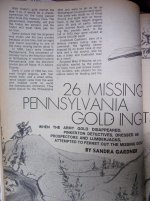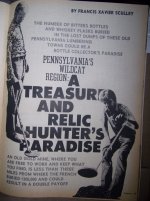pa plateau hiker
Bronze Member
- Jul 15, 2012
- 1,089
- 1,327
- Primary Interest:
- All Treasure Hunting
A few days ago, Carl-NC asked when the earliest stories were written about the gold. These are the earliest I have, there could very likely be issues before these. The first one was published in July 1974 "26 Missing Pennsylvania Gold Ingots". The 2nd issue was February, 1975, "A Treasure and Relic Hunter's Paradise".
















